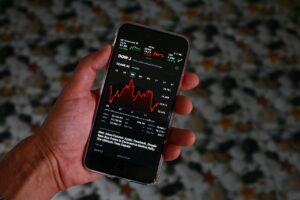The imposition of tariffs by President Donald Trump has raised concerns among economists and financial experts that the U.S. could be pushed into a recession.
Whether tariffs will drive the U.S. into a recession in 2025 is a complex question that depends on multiple factors, including the scope, duration, and global response to the tariffs, as well as the underlying strength of the U.S. economy.
Based on available analyses from economists and financial institutions as of April 3, 2025, here’s a breakdown of the potential impacts and uncertainties.
Economists generally agree that tariffs, like those implemented or proposed by President Donald Trump starting April 2, 2025, could pose significant risks to economic growth.
These tariffs include a broad 22% average rate on all imports—up from 2.5% in 2024—along with specific levies such as 25% on Canada and Mexico and up to 20% on China.
Experts highlight several mechanisms through which tariffs could push the U.S. toward a recession, typically defined as two consecutive quarters of negative GDP growth:
- Increased prices and Inflation: Tariffs increase the price of imported goods, which can raise costs for businesses reliant on foreign inputs (e.g., auto manufacturers, electronics firms). These costs are often passed on to consumers, reducing purchasing power. For instance, estimates suggest a 25% tariff on Canada and Mexico could add $3,000 to the price of cars sold in the U.S. Inflation could climb above 3% by year-end if tariffs persist, potentially exceeding the Federal Reserve’s 2% target and prompting tighter monetary policy that slows growth further.
- Reduced Business Investment: Uncertainty surrounding tariff policies—exacerbated by Trump’s fluctuating announcements—can lead companies to delay or cut investments. If firms freeze hiring or reduce production due to higher costs and weaker demand, economic growth could stall. Goldman Sachs, for example, raised its recession probability from 20% to 35% citing this uncertainty, alongside a slashed 2025 GDP forecast of just 1%.
- Global Trade Disruption: Retaliatory tariffs from trading partners like Canada, Mexico, and China could shrink U.S. export markets, hitting industries such as agriculture, energy, and manufacturing. A full-blown trade war might amplify these effects, with some predicting a 0.5–1.5% GDP reduction if retaliation escalates. This would disproportionately affect states like Texas and Ohio, which rely heavily on exports to Mexico and Canada.
- Consumer Confidence and Spending: With consumer spending driving about two-thirds of U.S. GDP, any tariff-induced price hikes could dampen confidence and lead to reduced consumption. Surveys indicate over 40% of Americans might stockpile goods or save more in anticipation of higher prices, signaling a potential spending pullback that could tip the economy into contraction.
A recession isn’t assured, according to some counterarguments and mitigating factors:
- Economic Resilience: The U.S. economy entered 2025 with robust hiring, a low unemployment rate (around 4%), and inflation below its 2022 peak. Some, like Wharton’s Jeremy Siegel, argue that short-term tariffs might only shave a few tenths of a percent off GDP without triggering a downturn, especially if they’re reversed quickly.
- Policy Responses: The Federal Reserve could counteract inflationary pressures by cutting interest rates—Goldman Sachs now expects three cuts in 2025—potentially softening the blow. Fiscal stimulus or tariff revenue redistribution to households could also offset some negative effects.
- Limited Trade Dependence: Unlike Canada or Mexico, where trade comprises 70% of GDP, U.S. imports and exports account for just 25% of GDP. This relative insulation might limit the overall impact compared to more trade-dependent economies.
The tipping point likely hinges on duration and retaliation. If tariffs last beyond six months and spark a sustained trade war, experts like Mark Zandi of Moody’s Analytics see a 40% recession chance, up from 15% earlier in 2025. Conversely, if Trump negotiates exemptions or rolls back tariffs (as seen with temporary suspensions in March), the damage could be contained to a “soft patch,” as suggested by Yardeni Research.In short, tariffs could drive the U.S. into a recession by raising costs, curbing investment, and disrupting trade, especially if prolonged and met with retaliation.
Yet, the economy’s current strength and potential policy adjustments mean it’s not a foregone conclusion. As of now, the odds hover around 35–40% per major forecasts, but the outcome remains uncertain, resting on how these policies unfold over the coming months.




